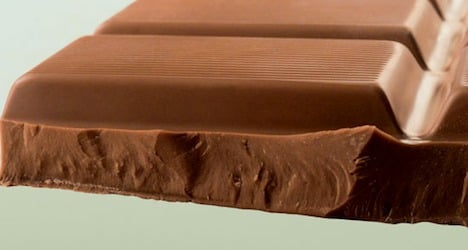Switzerland's 18 chocolate manufacturers, including such brands as Lindt, Frey and Faverger, sold 4,000 fewer tonnes last year than in 2011 as an "overvalued Swiss franc . . . made Swiss chocolate products more expensive abroad and made imported chocolate cheaper," Chocosuisse said in a statement.
The chocolate makers saw their sales fall 2.2 percent in terms of quantity to 172,376 tonnes, while their turnover fell 3.4 percent to 1.6 billion francs ($1.8 billion), it said.
More than 60 percent of Swiss chocolates are exported, and foreign sales were hit especially hard, Chocosuisse said.
In terms of volume, exports fell 2.9 percent to 103,897 tonnes, while the strong franc and overall slowdown of the world economy further nibbled away at foreign sales in value terms, which fell 7.3 percent to 760 million francs.
Germany is the biggest foreign market for Swiss chocolate, accounting for 18.3 percent of the exports, followed by Britain at 13.8 percent and France at 9.2 percent.
Apart from Germany, Britain and Belgium, most of the sector's European sales fell, the organisation said, adding though that Swiss chocolate had made great strides in places like Bahrain, China, India and Japan.
In Switzerland, turnover actually inched up 0.3 percent last year but sales volumes fell 1.2 percent, Chocosuisse said, pointing out that consumers had been dissuaded by "above-average temperatures" while "the decline in tourist numbers compared with the previous year" had also had an impact.
In addition, "price-conscious consumers have increasingly been buying the imported products, which have become cheaper as a result of the currency situation," the organization said.
"In 2013, the Swiss chocolate manufacturers hope to make up for the loss of market share experienced during 2012 on the highly saturated domestic market and to increase export business," Chocosuisse said.



 Please whitelist us to continue reading.
Please whitelist us to continue reading.
Member comments